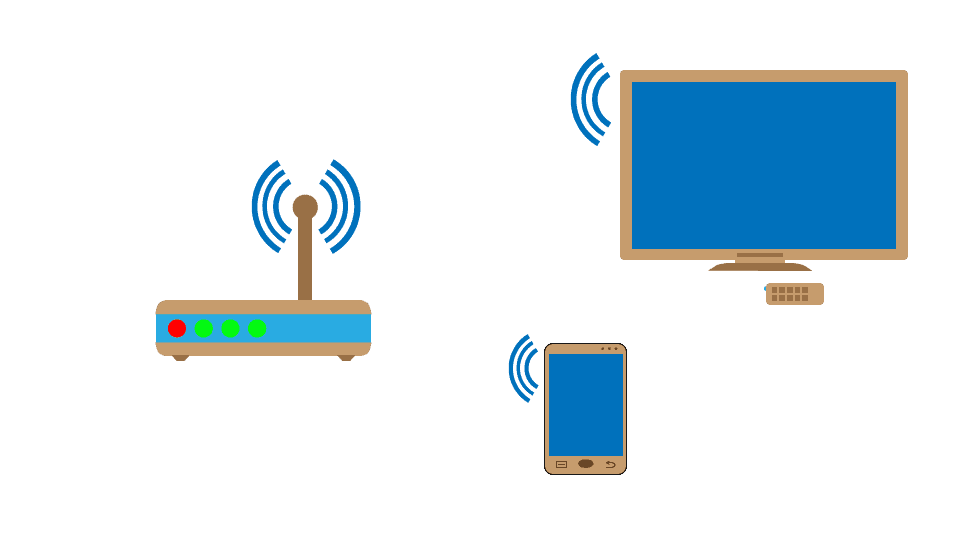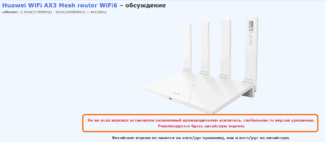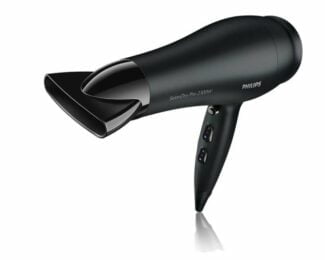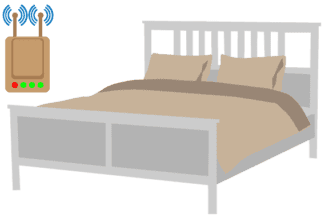Those who are hypersensitive to microwaves may experience insomnia, memory and concentration problems, as well as depression, anxiety, and pain in various parts of the body from their exposure.
Assessing the Effects of Wi-Fi-Ray on Living Organisms
Advances in technology have provided us with fast and efficient communication and communication technologies. Today, wireless communication is the most popular service used by almost everyone on earth, and Wi-Fi technology is one of the leading technologies in this field. In any case, this wireless solution is installed in apartment buildings by ordinary residents, as well as in offices and industrial premises. Most modern Wi-Fi devices operate in the 2.4 GHz (rarely 5 GHz) band. IEEE 802.11 wireless adapters are installed in almost all laptops, smartphones, tablets, printers and other peripherals. The use of these devices with wireless adapters is gaining popularity, and every day their number is steadily increasing, because the convenience is obvious – no wires and connection in a couple of clicks.
At the same time, there is growing public concern about electromagnetic pollution. And these worries are not unfounded, because studies show that constant exposure to microwave radiation on the human body causes headaches, cancer, anemia and other health hazards. In turn, Wi-Fi devices are usually located in public places, and sometimes, to increase the bandwidth of the network, access points are set quite tightly to each other, so that the total signal level from all devices may exceed the allowable standards.
The range of radiation in which Wi-Fi devices operate is non-ionizing.
For reference: Ionizing radiation – is a set of different types of microparticles and physical fields with the ability to ionize matter, i.e. to form electrically charged particles – ions. There are several types of ionizing radiation: alpha-, beta-, gamma-radiation and neutron radiation.
Non-ionizing electromagnetic radiation can affect the biological system through both thermal and non-thermal effects. In turn, non-ionizing radiation can act like ionizing radiation and cause long-term health problems. This article discusses the results of the effects of Wi-Fi-radiation on blood chemistry and hematology.
Testing Methodology
Wi-Fi at high power levels can cause a "heat effect", which is a force that heats fluid in cells and causes cell damage. To avoid the manifestation of the thermal effect sanitary standards recommend the power of Wi-Fi routers 0.614 V/m (0.1 W/cm2) for access points installed in outdoor areas and 0.19 V/m (0.01 W/cm2) for indoor use. Also note that an important value used in measuring the level of cell damage from radiation is the Specific Absorption Rate (SAR), which is measured in watts per kilogram of tissue (W/kg). SAR is a measure of the rate at which energy is absorbed by the body when exposed to an electromagnetic field. The limit set by the Federal Communications Commission in the United States is 1.6 W/kg, while the limit set in Europe is 2 W/kg. Russia has its own system for measuring the radiated power – in watts per square centimeter.
The laboratory setup is shown in Figure 1. The external antenna is connected to a signal generator operating at a frequency of 2.4 GHz. Radiation of the antenna is directed to the "A" cell, which contains 30 male mice. The cage is located in the far field of radiation of the antenna at a distance of 1 meter from it. The far field of the antenna is the area of the field where the angular distribution of the field is almost independent of the distance to the antenna. In the second cage "B" was placed 15 male mice, which were placed far away from the area of the Wi-Fi generator, so that the radiation had almost no effect on them. The samples were exposed to radiation for eight hours a day for six months. Both cages had samples of mice of the same age and size.
The far zone of the antenna can be determined as follows: first we determine the wavelength
Savings in electricity
Wi-Fi routers typically consume between 4 and 15 watts per hour, which is an average of (4+15)/2=9.5 watts. This power can be compared to an LED bulb. It is easy to calculate that in a month of round-the-clock operation will run 9.5*24*30=6.84 kWh. Multiply that figure by your tariff, and you get the monetary value of the electricity consumed per month.
The question of harm from electromagnetic radiation is still open. Researchers have broken a lot of heads in the battle for the truth, but there is still no clear answer. You can read the standards specified in the document on "permissible parameters of electromagnetic radiation in the premises of residential and public buildings and in residential areas.

A Wi-Fi router emits in the 2.4 GHz band, and the power of such emissions is usually about 100 mW. Such power, of course, is not enough to have a tangible effect on a living organism. But we should not forget the ever-growing electromagnetic pollution, where the router is just a drop in the ocean. Children's bodies can be particularly badly affected by radiation.
How to protect yourself from Wi-Fi radiation
There are several ways to reduce your body's exposure to electromagnetic waves generated by a router:
- Move the router to a room where you and your family are least likely to. After all, the power of radiation is inversely proportional to the square of the distance to the source.
- In the settings. Reduce the power of the device, reducing it to the necessary minimum.
- Install a directional antennaUse a directional antenna if you need to transmit in only one direction.
- Turn off the wireless transmitterTurn off the wireless transmitter when it is not needed.
How to Reduce Router Harm
Of course, the best way to minimize Wi-Fi damage is to not use a router at all. After all, after all, you can connect your computer or laptop to the network via wires. But it is unlikely that Internet users are ready for such a radical solution. And if you follow this method in everything, then you would have to give up television, radio, and mobile communications as well.
So let's look at how you can continue to use a wireless network at home and still reduce the harmful effects of router radiation on the body.
Household routers are usually not very powerful. They operate at frequencies up to 5 GHz and their radiation power does not exceed 100 mW. However, there are more powerful devices used to transmit data over long distances when organizing large networks. You do not need such powerful routers in your apartment. Therefore, use a regular router. Its impact on your body will be minimal.
Place the router away from your workplace. And especially away from the bed where you sleep.. In fact, if possible, install it in the room where you are least occupied. For example, in a hallway, in the attic of a private house, or in any non-residential room. At a distance, radio waves are much less dangerous. Of course, the farther away the router, the weaker the signal, but for a city apartment in most cases it is not important. If you are not happy with the signal quality, you will have to find a reasonable compromise.
The fewer devices – the better. It is better to use one powerful router, if necessary, than two or three weaker devices. If you can't do without repeaters in your case, try to keep their number to a minimum.
In normal operation, the router emits radio waves continuously. If its continuous operation is not necessary, it makes sense to reduce the time of its active operation. Most routers can be configured to connect to the Internet only when there are active client devices. The rest of the time the router will be in passive mode and the intensity of its radiation will be significantly lower.
Conclusion
In today's world, it is not possible to completely get rid of the effects of Wi-Fi radiation. Because routers are used in homes, offices and even on the street. Large cities are completely covered by wireless networks.
The power of Wi-Fi radiation from an ordinary router is many times less than the radiation from other household appliances. Therefore, the harm it can cause to the human body is minimal.
In order to protect yourself from the possible negative consequences of constant contact with a Wi-Fi router, it is sufficient to follow a number of simple recommendations.
advertisement
Typical signal strength of a problematic network -80dBm
However, with variable intervals, usually a few seconds, the signal strength of this network, increases sharply on the client side (which is my laptop). Namely, the signal power grows to -22dBm (!). Of course, with the laptop in the same place.

TOTOLINK_XXX network signal strength jump
advertisement
And such a strong signal holds for quite a long time, acting as an excellent "jamming" neighboring networks in the frequency bands 1-6, because the owner of the unfortunate network "stretched" its width to 40 MHz.
But the communication problems in neighboring networks are not the worst of it. I'm just afraid to imagine what peak power of radiation this network's home (!) router (probably malfunctioning) produces, instead of the standard 100 mW (20dBm). Further I will try to explain you why it is dangerous and why you should not live near such routers.
A lyrical digression. I have always considered Wi-Fi to be a completely harmless feature. Until I got a laptop Acer Nitro AN515-55 (you can read about it here) with an excellent Intel AX201 wireless adapter. So, I noticed that when I was sharing torrents via Wi-Fi from this laptop, I got a headache. I even did a series of confirming experiments to be sure of this unequivocally, rather than write it off as a coincidence. The reason for this is clear – if in usual laptop's mode the wireless adapter mainly works as a receiver, then during the distribution of torrents via ah network (Wi-Fi 6) the laptop turns into a powerful radio transmitter with a very heavy traffic. Moreover, in a transmitter located right in front of your face. Even reducing the transmit power to medium had no positive effect. And this despite the fact that the torrent traffic on every home computer, including this laptop, has strict limits so as not to "clog" the narrow external 100 Mbit channel to the ISP. This is how I empirically realized that Wi-Fi is not so harmless. In general, now my laptop gives out torrents only when I am not sitting at it.
Contrary to popular belief, the government is far from stupid. And the government does not set the radiation power standards for routers in vain.
Lyrical digression 2. Why high-powered routers at home are unnecessary and useless is detailed here.
Recommendations
The harm of Wi-Fi has been considered by numerous global health organizations, and experts have provided data that the radiation from a router is 600 times lower than acceptable standards. Normal mobile communications are far more dangerous than Wi-Fi radiation, and a year of using a router is equivalent to 20 minutes on a cell phone.
There is no denying the harmful effects of Wi-Fi, but no one is going to restrict the use of wireless networks. What is the reason? It is banal and clear – corporations that produce televisions, telephones, computers, home appliances and the latest devices with built-in Wi-Fi function will incur enormous losses in the event of mankind abandoning wireless technologies. Therefore, every person should think about the necessity of filling their everyday life with superfashionable technologies, and if avoiding their introduction into the usual household is inevitable, then at least take care of reducing the harmful radiation emitted by the devices.
How to reduce the harm from Wi-Fi
It is not possible to completely get rid of the frequency radiation of devices and reduce the harm from Wi-Fi to zero, but you can reduce its deleterious effect by the following ways:
- When buying and installing routers in the house, users do not pay attention to the fact that almost all devices have functions to adjust the signal strength. Basically, all devices maintain the factory settings, set to the maximum strength of the streams. By reducing the power of the device by 25.50, you can significantly narrow the coverage area and reduce the harmful dose of Wi-Fi radiation.
- It is recommended to stay at a distance of about 40 cm from the device during operation. This especially applies to users who have to work in the Wi-Fi coverage area.
- You should unplug the router at night and disconnect it during idle time.
- Devices that receive Wi-Fi signals are better to keep away from your body – do not put your laptop on your lap, and while using the phone, connect a removable headset.
- Install the router at home in the working area, away from bedrooms and places where children are most often.
- If possible, you should abandon the use of Wi-Fi in favor of wired technology, and in public places avoid places with wireless coverage area.
- The best option would be to create one powerful Wi-Fi access point in the apartment instead of several sources of radiation.

At night you should turn off the Wi-Fi router and try to keep children away from the places where the device is installed
Undoubtedly, today wireless communication is a comfort and convenience. And if you have no opportunity to protect yourself from harmful radiation, then you must take care of the protection of children, because the immune system of a child, unlike an adult, is much weaker, since the child's body has not yet been fully formed. You should not allow your child to be in the zone of any dangerous radiation and try to protect them from spending a long time in the room where the Wi-Fi router is installed.
Read More:




